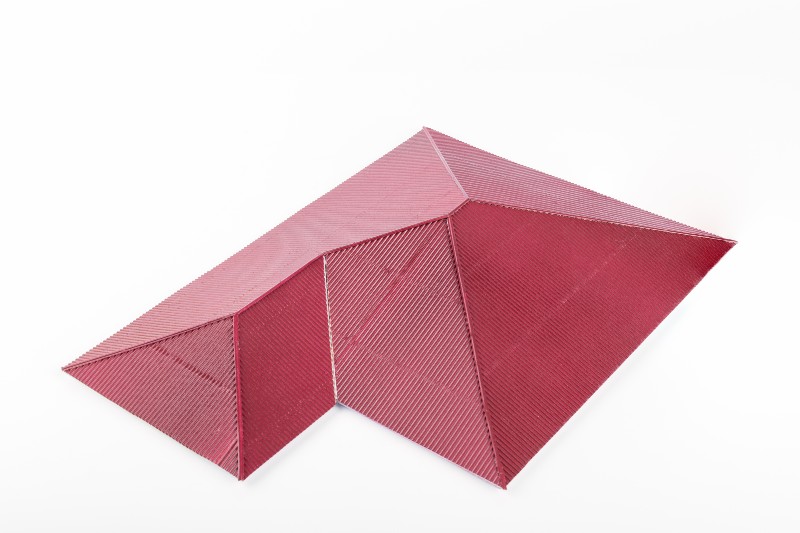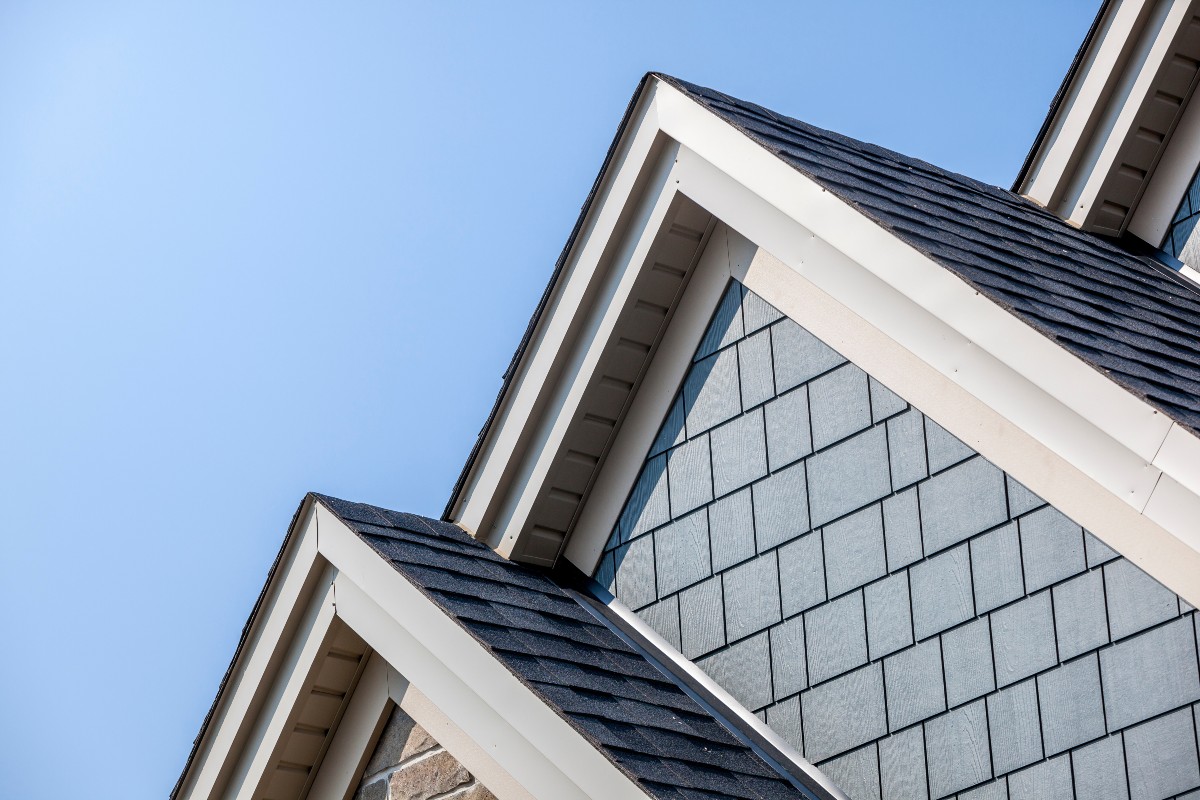Some of the most popular roofs in the United States, hip and gable roofs come with several compelling advantages and a few important disadvantages. Read on to learn which type of roof is right for your home.
Gable Roofs
Also known as pitched roofs, gable roofs are easily recognized by their triangular shapes.
Pros
Gable roofs easily shed snow and water, while providing more space for vaulted ceilings or attics. They also allow for more ventilation, and their simple design makes them cheaper and easier to build compared to more complex designs.
Cons
Gable roofs aren’t ideal for very high wind and hurricane-prone areas. When the frames aren’t properly constructed with good supports, the roofs may collapse under strong winds, which can also strip materials from gable roofs. If there is an excessive overhang, winds can also create an uplift that can actually cause the gable roof to detach from the walls.
When used in high wind areas, gables require proper braces and thorough inspections following storms.
Materials
Gable roofs can be covered with almost any kind of roofing material including cedar shakes, asphalt shingles, metal, Terra Cotta tiles, clay or concrete tiles. That said, if the gable roof also includes valleys, hips and a dormer, it should be shingled or roofed with a standing seam to help prevent roof leaks. It’s also very important to install appropriate flashing on valleys and walls around the dormer. It’s also best to use at least a 10/12 pitch for snowy regions.
Types of Gable Roofs
Crossed Gable: This is a two-gable roof with sections assembled at the right angle. With crossed gable roofs, the two ridges are perpendicular, while the heights, pitches and lengths may or may not differ from each other.
Side Gable: A basic pitched roof, side gables have two equal panels or sides which are pitched at an angle. Both gable sides meet at the ridge in the center of a structure. The triangle section can be enclosed for a boxed gable roof or left open for an open gable roof.
Frequently used in Cape Cod and Tudor styles houses, side gables are a very nice design for houses with separate wings. You can also use cross-gable roof architecture to accent different potions or a house. such as the porch, garage or dormers.
Front Gable: Often used in Colonial-style houses, front gable roofs are placed at the entrance of the home.
Dutch Gable Roof: This is essentially a hybrid of the hip and gable roofs. A gable roof is installed at the top of a hip roof to improve aesthetics and provide more space.
Hip Roofs
Hip roofs are built with slopes on all four sides. The sides are equally sized and joined at the top to create the ridge.

Pros
More stable than gable roofs, hip roofs have inward slopes on every side which makes them sturdier and more durable. Excellent in snowy and high-wind areas, hip roofs have steeper slants that allow snow and water to easily slide off. Hip roofs can also offer extra living space when a dormer crow’s nest is installed.
Cons
More expensive than gable roofs, hip roofs are a more complex design that demands more building materials. What’s more, if the design includes dormers, the additional valleys and seams can make it easier for rainwater leaks to develop around the sidewalls of dormers. That said, this is generally only a problem if the roofing system isn’t properly installed or if the dormer walls aren’t properly flashed. Proper construction and regular roof system maintenance are vital to preventing minor issues from evolving into major problems.
Materials
Like gable roofs, hip roofs can be covered with almost any kind of roofing material, such as metal, shingles, slate or tiles.
Types of Hip Roofs
Half Hipped: A standard hip roof with two sides shortened to create eaves.
Simple Hip: The most typical kind of hip roof, these designs have a triangle on two sides and a polygon on two other sides. Each side comes together at the top to create a simple ridge.
Cross Hipped: Similar to a cross gable roof, cross-hipped gables are used on homes with separate wings. The two roofs meet at a line called a valley. Since water can pool in valleys, adequate waterproofing is a must.
Whether you need a gable roof, hip roof or some other roofing design, A to Z is here to help. For decades, the professionals at A to Z Roofing have served countless satisfied customers throughout the Denver metro and the Front Range. For nearly a quarter of a century, we have been the go-to source for expert residential and commercial roofing, repair and restoration for homeowners and businesses throughout Colorado. During this time, we’ve provided comprehensive service using only top-quality products. Contact our attentive team to learn how we can restore, repair or replace your damaged or aging roof.

